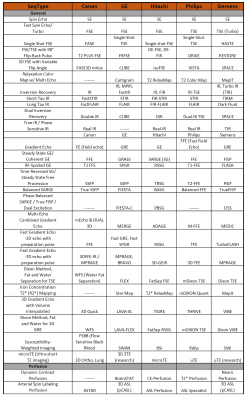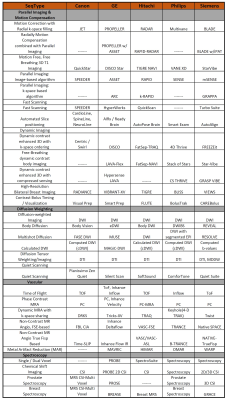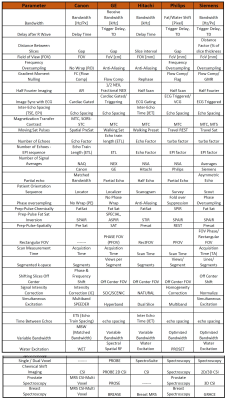Matthias Gunther1
1Fraunhofer MEVIS, Germany
Synopsis
MRI is the medical imaging modality with by far the largest diversity
of “imaging modes” (aka MR sequences). There seems to be the habit in the
MR community to compete in terms of fantasy when it comes to sequence naming. Over
the past, this has led to a huge variety of different acronym denoting MR
sequence, which are closely related, but still carry different names. Very
minor changes seem to justify the creation of new acronyms. This makes the
field of MR sequences challenging. Fortunately, dictionaries of acronyms exist
to guide one through this jungle (for links see reference section).
Acknowledgements
No acknowledgement found.References
Sequence physics:
https://radiopaedia.org/articles/mri-sequences-overview?lang=us
Chavhan GB, Babyn PS, Jankharia BG et al. Steady-state
MR imaging sequences: physics, classification, and clinical applications. Radiographics
2008;28:1147-1160.
(https://mriquestions.com/uploads/3/4/5/7/34572113/chavhan_gre_classification_radiographics.pdf)
General MRI
Acronym Directory:
http://www.simplyphysics.com/MARS/data/level_1/pulse.htm
Gary Liney, MRI in Clinical Practice,
Springer:
https://link.springer.com/book/10.1007/1-84628-162-8.
Contains an appendix for MR sequence acronyms
MR sequence acronyms
across vendors:
an extensive list of sequences and sequence
parameters:
https://hca.fujifilm.com/sites/default/files/downloads/MRI%20Acronym%20Guide_PrintVersion.pdf
a (not so extensive) list of sequence acronyms
for 9 vendors:
https://www.mr-tip.com/serv1.php?type=cam
a list of parameter options for the 9 vendors:
https://www.mr-tip.com/serv1.php?type=cam&sub=1


